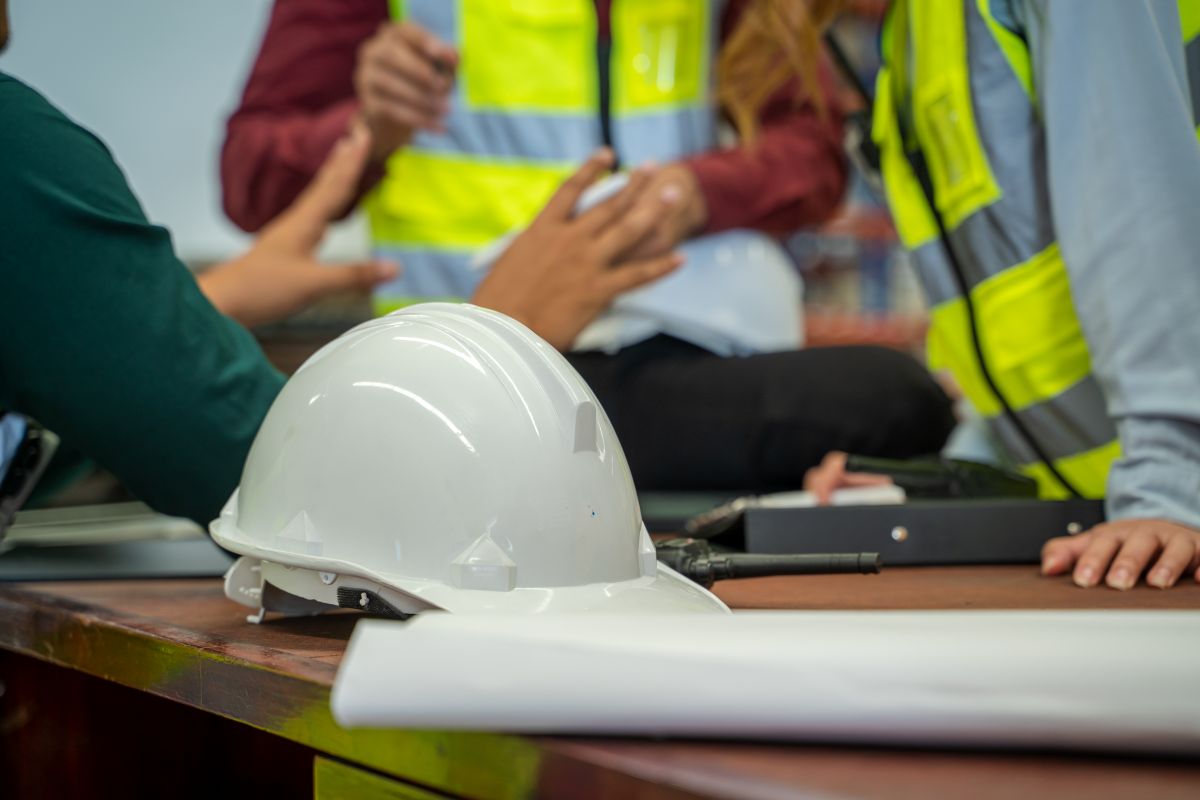
How to Plan an Effective Health and Safety Video
Workplace safety is not just about procedures and checklists. It is also about how those procedures are communicated. One of the most practical ways to teach and reinforce safety behaviours is through a well-planned health and safety video. When planned properly, this kind of video can help organisations lower the risk of accidents, increase awareness, and meet compliance requirements. The challenge is knowing how to plan such a video so that it serves its purpose and works well for your audience. Many organisations turn to video because it presents information clearly and is easy to distribute across teams. But creating a video that works well takes more than recording someone talking or demonstrating a task. The process involves planning, structure, and attention to detail. When working with a professional production team, understanding what happens at each stage, and what your organisation can contribute, helps ensure that the final result is accurate, useful, and appropriate for its audience. Let’s take a look at what that entails.
Step 1 – Define Objectives and Audience
The first step is to define what you want the video to achieve. The more clearly the objective is stated, the more focused the video can be.
Objectives might include:
- Teaching correct equipment use
- Demonstrating safe movement through a worksite
- Showing emergency procedures
- Addressing common risks in the workplace
It is also important to define the audience. A video aimed at new hires may need to explain basic procedures in simple terms. A refresher video for experienced staff may only need to highlight updated practices. Contractors, visitors, and field staff may also have different needs.
When you provide this information early, it helps the production team recommend an approach that fits the real purpose of the video.
Step 2 – Choose the Right Format and Tone
Different formats work for different objectives. In many cases, live-action video works well when people need to see how tasks are performed or when it is important to show actual work environments.
Animated elements, such as motion graphics or overlays, can help draw attention to important details or explain concepts that are not easy to film. A fully animated video may also be useful in cases where environments change often, when the video must be used across multiple locations, or when the safety procedure that needs to be demonstrated is safer to show through animation than to recreate in live action.
The tone of a health and safety video should match the seriousness of the subject while staying clear and easy to follow. Most often, a calm, factual tone works best. Some audiences may benefit from a more conversational style, while others may require a more formal tone due to legal or compliance considerations. A professional production company will guide these decisions, but knowing your audience helps shape the right approach from the start.
Step 3 – Information Gathering and Scripting
Accurate information is at the heart of any good safety video. Production teams will rely on the client to provide up-to-date safety documentation, such as risk assessments, safety policies, or operating procedures. Speaking with internal subject matter experts, for example, health and safety managers, can also provide helpful insights.
Once the production team has the necessary information, they will develop a clear and well-structured script. Each part of the video should cover one main point at a time, using language appropriate for the audience. If you provide accurate and complete information during this stage, it helps ensure that the script reflects your procedures correctly and avoids any misunderstandings.
Step 4 – Storyboarding and Shot Listing
Before production begins, visual planning helps ensure the video flows logically and covers all necessary points. For animated videos, a storyboard or visual outline is usually created. This shows each scene frame by frame, illustrating how the animation will look, how information will be presented, and how on-screen text or graphics will support the message.
For live-action videos, a shot list is often more useful. This is a detailed list of each planned camera shot, including angles, actions, and locations. The shot list guides filming by breaking down the production into manageable pieces, helping the crew capture all required footage efficiently.
Both storyboards and shot lists serve to prevent missed content or last-minute changes during production. When clients review these materials early, they can confirm that all key points are included and that visuals accurately represent the workplace and procedures. This collaboration helps avoid costly reshoots or revisions later.
Step 5 – Pre-Production Planning
Production requires detailed planning. The production company will arrange equipment, crew, and scheduling. But input from the client is needed here as well.
This includes:
- Confirming locations where filming is allowed
- Ensuring access to equipment or areas to be shown
- Identifying any staff who will appear on camera
- Arranging for appropriate PPE where required
- Ensuring work areas are safe for the production team
Good communication during this stage prevents delays and helps ensure that the video will be filmed safely and efficiently.
Step 6 – Production
During production, accuracy and clarity are the main priorities. A professional team will ensure that demonstrations are filmed correctly, lighting and sound quality are good, and scenes match the planned script and shot list.
It is also important that any safety procedures shown in the video reflect what staff are expected to follow in real life. Production teams will often ask for someone from your organisation, such as a health and safety representative, to be present during filming to confirm that everything is shown correctly.
This level of attention ensures that your health and safety video will meet compliance requirements and support staff understanding.
Step 7 – Post-Production
Once filming is complete, the production team will edit the video. They will:
- Assemble footage in the correct sequence
- Add clear voiceover or captions as needed
- Insert on-screen graphics or animated elements
- Remove unnecessary content to keep the video clear and focused
Most professional videos in this category work best when they are concise. A typical length for a health and safety video is five to seven minutes for most audiences. Longer videos can be broken into sections to make the material easier to absorb. Clients should review the edited version carefully to confirm accuracy before final approval.
Step 8 – Review, Compliance, and Final Approval
Before a health and safety video is released, it should be reviewed by those responsible for health and safety within your organisation. This helps ensure that the video matches internal procedures and meets any required compliance standards.
If your organisation is subject to external audits, keeping a record of this review process will also be helpful. Professional production teams will expect and welcome feedback during this stage, and will make any necessary adjustments before delivering the final version.
Step 9 – Distribution and Use
Deciding how the video will be distributed is also important. Many organisations choose to host videos on their learning management systems (LMS), internal portals, or intranet. Others may provide tablets or screens at specific worksites.
Consider where and how staff will access the video. Should it be part of induction training? Should contractors be required to view it before entering certain areas? Answering these questions will help make the video more effective in real use. In some cases, quizzes or short assessments can also be added to confirm understanding.
Step 10 – Maintenance and Updates
Even after the video is in use, it is important to monitor its relevance. Safety procedures, equipment, and regulations can change. For this reason, many organisations schedule periodic reviews of their health and safety video content.
A professional production partner can help manage updates, whether that means filming new material or revising animations and graphics. Having an update process in place helps keep your content accurate and reliable.
Planning Ahead for a Better Result
Producing an effective health and safety video is a team effort. The production company brings technical skills and creative experience. The organisation brings subject knowledge, workplace insights, and an understanding of its audience. When both sides are well prepared, the process runs more smoothly, and the result is far more useful.
A clear brief, early input on structure, and prompt feedback at each stage all help reduce the need for changes later. It also helps ensure that the video aligns with current procedures, reflects the correct work environment, and meets any legal or compliance standards.
Taking the time to plan properly also helps create a video that will remain relevant for longer. With the right approach, your health and safety video can become a valuable part of training and workplace communications for years to come.Planning a health and safety video? It helps to have the right team on board. The team at Sound Idea Digital knows what it takes to turn a good plan into a clear, practical video that works for your audience. Get in touch to chat about your project.
We are a full-service Web Development and Content Production Agency in Gauteng specialising in Video Production, Animation, eLearning Content Development, Learning Management Systems, and Content Production.
Contact us for a quote. | enquiries@soundidea.co.za | https://www.soundideavideoproduction.co.za| +27 82 491 5824 |

